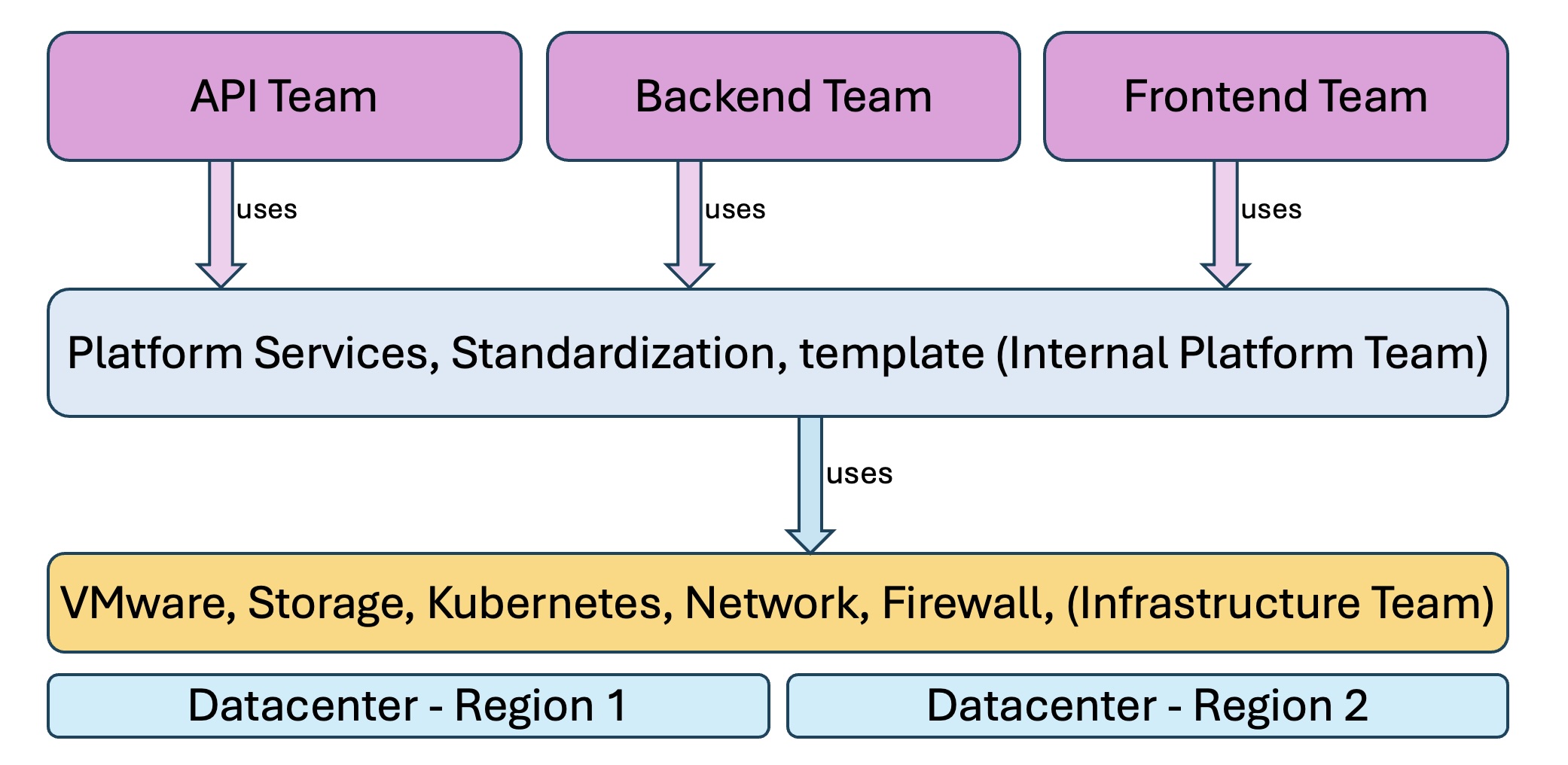Concepts·
Platform Engineering and Solving Developer Bottlenecks
Learn how platform engineering and internal developer platforms can solve bottlenecks and improve efficiency in software development.

- Developers often spend a significant portion of their time on peripheral tasks instead of focusing on their core software development. These tasks can include setting up databases, configuring identity and access management, managing image repositories, implementing security measures, networking, etc. An internal developer platform automates these processes, allowing developers to concentrate on writing code that adds direct value to their projects.
- Developers are experts in programming, not necessarily in database management, networking, or identity and access services. When developers handle these side services, it often leads to issues, such as opening unwanted internet access or improperly setting up database backups and recovery. An internal developer platform standardizes and secures these services, reducing the risk of such errors.
- Development teams within an organization may use different tools and methodologies, which complicates coordination and collaboration between groups. It also makes it challenging for infrastructure teams to support these varied environments efficiently. For example, different programming teams might use their preferred tools for automating software pipelines or different databases. An internal developer platform provides a unified set of tools and technologies, enhancing consistency and interoperability across teams.
- Frequently, different software groups in a company need to contact the infrastructure team for their requirements, such as server access, networking, permissions, and storage. This demand is particularly burdensome in large companies, slowing down operations and overwhelming the infrastructure team with requests. An internal developer platform can streamline these requests by offering self-service capabilities and automating common infrastructure provisioning tasks, thereby accelerating development cycles and reducing bottlenecks.
By centralizing and standardizing development tools and processes, an internal developer platform not only improves efficiency but also enhances security, reduces operational risks, and promotes a more collaborative and agile development environment.
